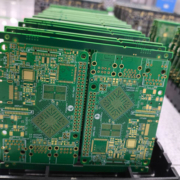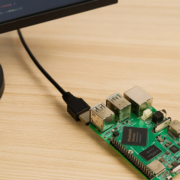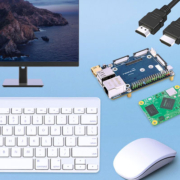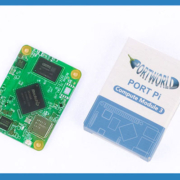Can Raspberry Pi Replace My Laptop?
With the rise of compact computing and DIY-friendly hardware, many tech enthusiasts are asking: Can a Raspberry Pi replace my laptop? On the surface, it seems appealing — a credit-card-sized computer that costs less than a dinner for two, consumes minimal power, and offers surprising flexibility. But can it realistically handle the everyday tasks we expect from a laptop?
In this article, we dive into the capabilities of the Raspberry Pi, compare it with traditional laptops, explore its limitations and strengths, and help you decide whether it can meet your needs.
What is a Raspberry Pi?
The Raspberry Pi is a low-cost, single-board computer developed by the Raspberry Pi Foundation. Originally designed to promote computer science education, it has evolved into a powerful platform for hobbyists, developers, and even commercial products.
The latest model, the Raspberry Pi 5, features:
- A quad-core ARM Cortex-A76 processor
- Up to 8GB of RAM
- USB 3.0 ports, Gigabit Ethernet, dual-display support
- PCIe connectivity, Wi-Fi, Bluetooth
- microSD storage or NVMe SSD support (via adapter)
Despite its size, the Raspberry Pi can run a full desktop environment like Raspberry Pi OS (Debian-based), or even Ubuntu, making it look and feel a lot like a regular computer.
What Do We Use Laptops For?
Before comparing, let’s outline common laptop tasks:
- Web browsing and email
- Word processing and spreadsheets
- Video conferencing
- Streaming media
- Coding and development
- Basic photo editing
- File management and cloud sync
- Gaming (light or intensive)
- Running heavy software like Adobe Creative Suite or AutoCAD
How does the Raspberry Pi handle these?
Raspberry Pi vs. Laptop: Task-by-Task Comparison
| Task | Raspberry Pi | Laptop |
|---|---|---|
| Web browsing | ✔️ Basic sites OK; struggles with heavy JS websites | ✅ Excellent |
| Office work | ✔️ LibreOffice works, but not as fast | ✅ MS Office or Google Docs fly |
| Video streaming | ✔️ 1080p possible with some tweaks | ✅ 4K and beyond easily |
| Zoom/Video calls | ⚠️ Limited performance and camera support | ✅ Smooth with webcam/mic |
| Coding | ✔️ Great for Python, C, Linux dev | ✅ Also great, faster build times |
| Photo editing | ⚠️ Very basic, no Photoshop | ✅ Full creative tools available |
| Gaming | ❌ Very limited, retro games only | ✅ From indie to AAA titles |
| Multitasking | ⚠️ Gets slow with multiple tabs/apps | ✅ Handles it well with more RAM |
| Storage | ❌ Limited without external SSD/USB | ✅ Large onboard storage |
| Battery (portability) | ⚠️ Requires power bank setup | ✅ Built-in, hours of use |
| OS/UI polish | ⚠️ Functional, not elegant | ✅ Polished desktop OS |
Advantages of Using Raspberry Pi as a Laptop Alternative
- Affordability – You can build a full system under $100.
- Low Power Consumption – Great for eco-conscious or solar-powered setups.
- Customizability – You can tweak hardware and software freely.
- Lightweight and Portable – Easy to carry, perfect for minimalist setups.
- Linux-Based Environment – Excellent for developers and terminal users.
- Great Learning Tool – Encourages understanding of operating systems, hardware, and coding.
Limitations That Might Matter
- Not Ideal for Heavy Multitasking – Limited RAM and CPU performance.
- Compatibility Issues – Some apps, especially Windows-only ones, won’t run.
- No Native Battery – It’s not a laptop unless built into a DIY PiBook.
- Storage Bottlenecks – microSD cards are slower and less durable than SSDs.
- Lower Build Quality (DIY kits) – You must assemble or 3D-print casings.
Who Can Use a Raspberry Pi Instead of a Laptop?
- Developers working on Linux-based apps or embedded systems.
- Students learning coding, networking, or Linux fundamentals.
- Tinkerers and hobbyists building DIY home automation or media centers.
- Tech minimalist users who just need terminal access and basic web tools.
But for professionals relying on productivity suites, intensive apps, and portability, a traditional laptop still holds the upper hand.
Can Raspberry Pi Become a Better Laptop?
Yes, with the right accessories and expectations.
You can pair the Raspberry Pi with:
- A 7” or 10” touch screen (like Portworld’s embedded panels)
- A portable keyboard and mouse
- An external SSD for faster storage
- A battery power bank
- A laptop shell kit like Pi-Top or CrowPi
Together, these create a functional laptop-like experience — particularly for coding, IoT projects, or remote desktop access.










